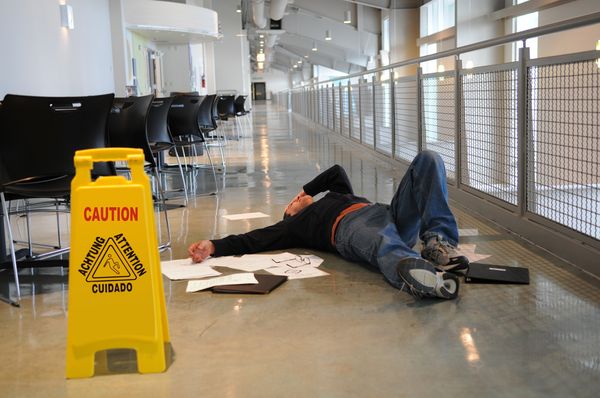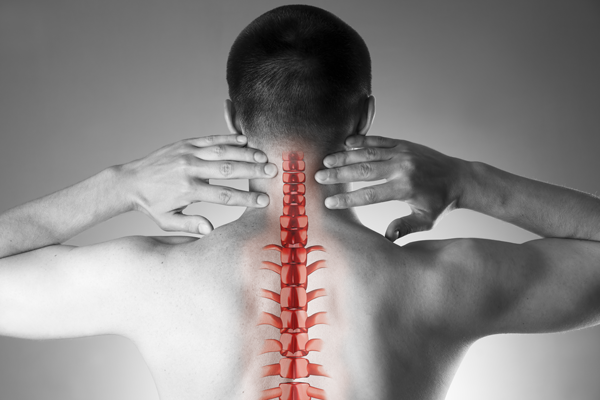- March 22, 2023
Whether your lifestyle is very active or very sedentary, you could be at risk of developing a back injury. In this article, you will learn the three most common back injuries and how to prevent them.
The Three Most Common Back Injuries
According to the National Institute of Arthritis and Musculoskeletal and Skin Diseases (NIAMS), the most common back injuries include:
Muscle Strains and Sprains
These conditions may sound similar, but they impact different parts of your back: a sprain is an injury to the ligament, while a strain is an injury to the tendon or the muscle itself.
Both strains and sprains share similar risk factors. They typically occur when someone pushes themselves too hard, perhaps by:
- Trying to lift more than they can handle or lifting heavy objects improperly
- Playing an intense sport for extended periods of time
- Not taking sufficient breaks at work, especially if the job requires stressful, repetitive motions
- Twisting or turning around too quickly
Herniated Discs
A herniated disc occurs when one of the soft, cushioning layers between your vertebrae either breaks or slips out of place. You may develop a herniation after an acute injury or after years of gradual wear and tear on your back.
When a disc is healthy, it sits directly between the vertebrae, keeping the bones from grinding together or putting pressure on a nerve. A herniated disc causes the bones to come into direct contact with other parts of the spine. This may cause painful symptoms.
Bone Fractures
Also called a broken bone, a fracture occurs when the bone is hit with such force that it cracks. Any of your bones can fracture, including the vertebrae in your back.
While people with weaker bones (e.g., those with advanced arthritis) are at greater risk of fracturing a vertebra, anyone can develop such an injury if subjected to a sufficiently traumatic event (e.g., a car accident).
Symptoms of Common Back Injuries
You will feel different symptoms—and symptoms in different locations—depending on what kind of injury you suffered. NIAMS lists the following as common back injury symptoms:
- Pain
- Weakness
- Numbness
- Tingling
- Stiffness
For some patients, symptoms get worse at certain times of the day or during certain activities (e.g., standing up). Symptoms may be localized, or they may shoot outward into other body parts, such as the leg or the hip.
You may suffer an injury at any point in your back, but as Cleveland Clinic points out, lower back pain is especially common: 80 percent of Americans will experience lower back pain at some point in their lives, either due to an injury or something else.
The three areas in which you may sustain a back injury are:
- The lower back: This is the area from your tailbone up to the bottom of your ribcage.
- The middle back: Your mid-back encompasses most of your back, from the bottom of your ribs to the base of your neck.
- The upper back and neck: Also called the cervical region, this part of your spine includes the bones in your neck all the way up to the base of your skull.
How to Prevent Back Injuries
Sprains and strains, herniated discs, and vertebral fractures are among the three most common back injuries. Knowing how to prevent them can save you a lot of money and pain over the course of your life.
Taking good care of your back keeps it strong, which can reduce the risk of your injuring it. You can boost your back health by:
Exercising Appropriately
Every patient’s exercise needs are different. Likewise, not every exercise is appropriate for each patient. Before you start or alter your exercise routine, you can consult a doctor to:
- Explain which types of exercise are good for someone with your condition
- Teach you how to perform the exercises the right way, as performing them incorrectly can cause an injury
- Warn you against any exercises that may be harmful to you based on your fitness level or general health
Eating a Healthy Diet
Carrying more weight than your body is genetically designed to carry can put undue stress on your back, increasing your risk of injury.
Note that this does not mean you must be thin to have a healthy back. You can work with a doctor you trust to determine what a healthy weight is for you. As long as you eat and exercise properly, the number on the scale should not matter.
Treating Minor Injuries Promptly
Almost everyone will experience a back injury or back pain at some point. Even if you only experience minor symptoms, you should not ignore a back injury. By taking proper precautions—like resting, using ice or heat packs, or seeing a chiropractor—you can prevent the types of big injuries that can upend your life.
What to Do After a Back Injury
Chiropractic care can help get you back on track after injuries to the muscles, bones, tendons, or ligaments. The types of treatments you receive from a chiropractor will differ depending on your:
- Type of injury
- Severity of injury
- Location of injury
- Past attempts at treatment, if any
- Goals for treatment
- Overall health
Chiropractors offer chiropractic adjustments, massage therapy, rehabilitative therapy, ultrasound therapy, and other forms of treatment to back injury patients. You could experience relief in just one appointment, or you may need multiple appointments to receive the full benefits of chiropractic care.
Remember that suffering a back injury does not mean you have to be in pain for the rest of your life. With a chiropractor’s help, you could heal from your injury and learn how to change your life in ways that may prevent further injuries.
Prevent Back Injuries With Chiropractic Care
Specific Care Chiropractic is dedicated to helping patients move past injuries and live their best lives. We can explain more about the three most common back injuries, how to prevent them, and how to treat an injury after one develops. Call (239) 369-9109 when you are ready to book an appointment.







